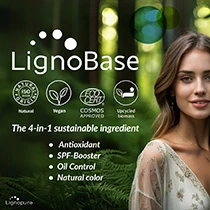Scientists combine bacteria and chips in “living bioelectronic patch” to treat skin concerns
13 Jun 2024 --- Engineers at Rutgers University, New Brunswick, US, create a device they hope will help with skin conditions such as psoriasis, wounds and skin cancer. The “living bioelectronic” patch merges electronics with bacteria and hydrogels to interact actively with the body.
The research in Science, led by assistant professor Simiao Niu, led to the creation of a “wafer-thin” patch about one inch in diameter. Electronic chips and living bacteria embedded in a starch and gelatin gel matrix were embedded in the patch.
“We were looking for a new type of device that combines sensing and treatment for managing skin inflammation diseases like psoriasis,” says Niu. “We found that by combining living bacteria, flexible electronics and adhesive skin interface materials, we were able to create a new type of device.”
 The bacteria in the patch secretes compounds known to alleviate inflammation.Technology for skin health
The bacteria in the patch secretes compounds known to alleviate inflammation.Technology for skin health
Niu took inspiration from his struggle with psoriasis, not knowing when the skin was irritated or was healing and when to stop treatment.
As a former engineer on the Apple team, he envisioned a wearable electronic device similar to those used in consumer electronics, such as watches, but tailored for medical applications.
Electronic watches can also monitor bodily rates, such as heart rate.
This led to his team developing a prototype device integrating sensors capable of monitoring key skin health indicators such as impedance, temperature and humidity. “Seamless interfaces between electronic devices and biological tissues stand to revolutionize disease diagnosis and treatment,” states the paper authors.
At the same time, the living bacteria, S. epidermidis, embedded in the gel casing actively secrete compounds known to alleviate inflammation, say the researchers.
“S. epidermidis is not merely a passive resident on the skin but actively primes the cutaneous immune response, maintains skin homeostasis and prevents opportunistic pathogens from causing disease via colonization resistance,” separate research outlines.
 Beyond psoriasis, researchers say potential applications for wound healing and skin cancer treatment.Human trials for FDA approval
Beyond psoriasis, researchers say potential applications for wound healing and skin cancer treatment.Human trials for FDA approval
The team is preparing for human clinical trials, the next crucial step toward possible commercialization, since the initial experiments in mice have shown encouraging results.
Compared to traditional bioelectronics, which mainly concentrate on monitoring without therapeutic intervention, the ability to simultaneously monitor and treat skin conditions represents a significant advancement, according to the research.
Beyond psoriasis, the “living bioelectronic” patch promises to treat various skin ailments, including wounds and potentially skin cancers. Researchers note that the design makes treatment efficacious but also reduces irritation — a common challenge with existing medical devices.
If the team is clinically successful in human trials, they expect it to be approved by the US FDA and used in personalized skin care treatments.
Skin-tech innovations
In other skin care and technology fusions, Amorepacific said it launched the “world’s first” electronic skin for cosmetic solutions to environmental stressors in collaboration with the Massachusetts Institute of Technology.
The chip-less wireless wearable electronic skin (e-skin) can transmit data and monitor the wearer’s skin. The product is anticipated to accelerate the creation of improved cosmetics that withstand the harsh elements of varied climates. The e-skin is also sweatproof and can monitor skin changes over extended periods.
The US-based Terasaki Institute for Biomedical Innovation unveiled research findings surrounding a flexible, antibacterial hydrogel-electronic patch that allows for tailored, high-efficiency wound healing.
“Our patch provides an electrical stimulation-delivery platform for personalized skin care,” Wujin Sun, assistant professor of biological systems engineering at US-based Virginia Tech, previously told Personal Care Insights.
By Venya Patel













